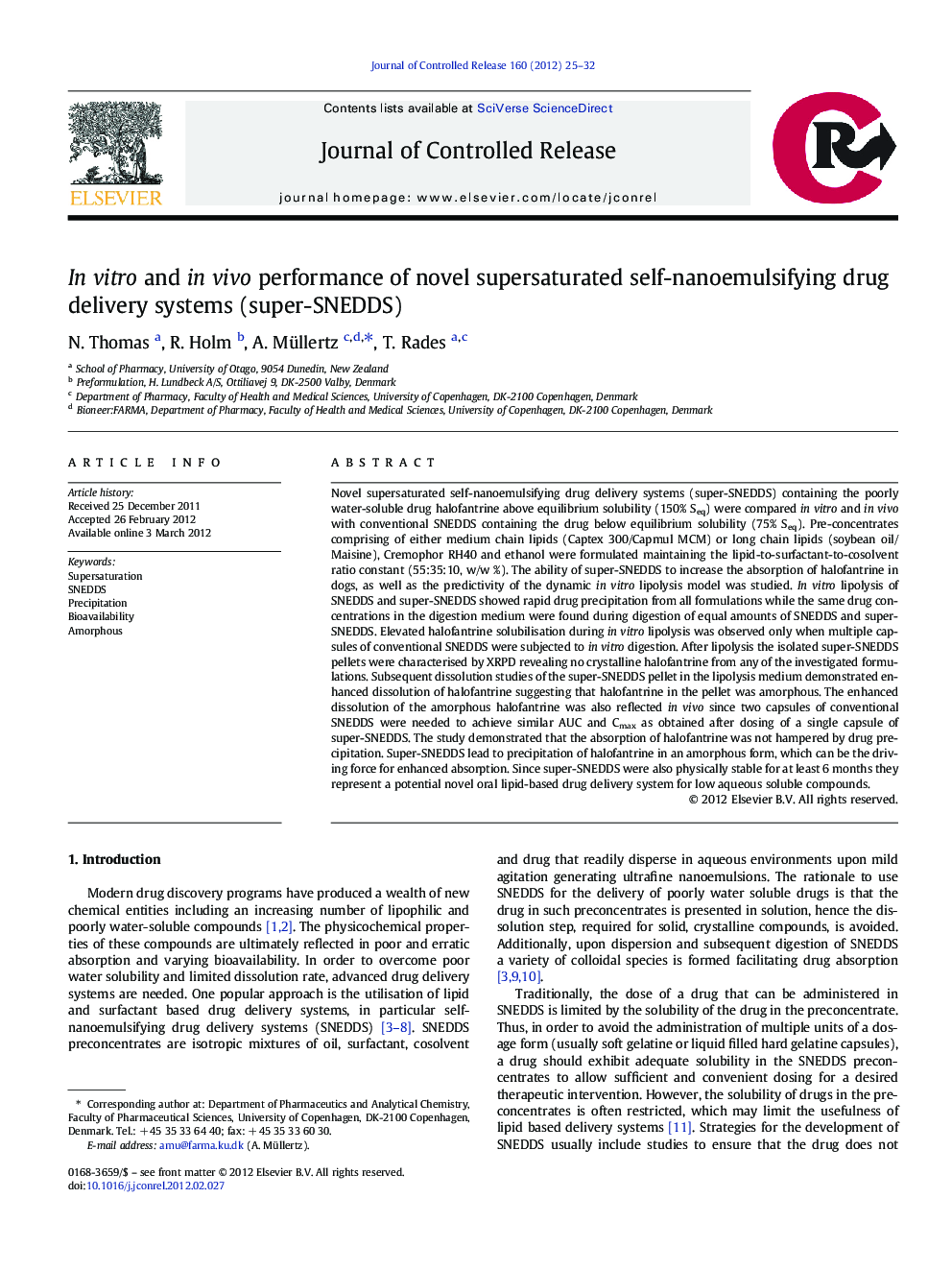| Article ID | Journal | Published Year | Pages | File Type |
|---|---|---|---|---|
| 1424652 | Journal of Controlled Release | 2012 | 8 Pages |
Novel supersaturated self-nanoemulsifying drug delivery systems (super-SNEDDS) containing the poorly water-soluble drug halofantrine above equilibrium solubility (150% Seq) were compared in vitro and in vivo with conventional SNEDDS containing the drug below equilibrium solubility (75% Seq). Pre-concentrates comprising of either medium chain lipids (Captex 300/Capmul MCM) or long chain lipids (soybean oil/Maisine), Cremophor RH40 and ethanol were formulated maintaining the lipid-to-surfactant-to-cosolvent ratio constant (55:35:10, w/w %). The ability of super-SNEDDS to increase the absorption of halofantrine in dogs, as well as the predictivity of the dynamic in vitro lipolysis model was studied. In vitro lipolysis of SNEDDS and super-SNEDDS showed rapid drug precipitation from all formulations while the same drug concentrations in the digestion medium were found during digestion of equal amounts of SNEDDS and super-SNEDDS. Elevated halofantrine solubilisation during in vitro lipolysis was observed only when multiple capsules of conventional SNEDDS were subjected to in vitro digestion. After lipolysis the isolated super-SNEDDS pellets were characterised by XRPD revealing no crystalline halofantrine from any of the investigated formulations. Subsequent dissolution studies of the super-SNEDDS pellet in the lipolysis medium demonstrated enhanced dissolution of halofantrine suggesting that halofantrine in the pellet was amorphous. The enhanced dissolution of the amorphous halofantrine was also reflected in vivo since two capsules of conventional SNEDDS were needed to achieve similar AUC and Cmax as obtained after dosing of a single capsule of super-SNEDDS. The study demonstrated that the absorption of halofantrine was not hampered by drug precipitation. Super-SNEDDS lead to precipitation of halofantrine in an amorphous form, which can be the driving force for enhanced absorption. Since super-SNEDDS were also physically stable for at least 6 months they represent a potential novel oral lipid-based drug delivery system for low aqueous soluble compounds.
Graphical abstractFigure optionsDownload full-size imageDownload high-quality image (189 K)Download as PowerPoint slide
